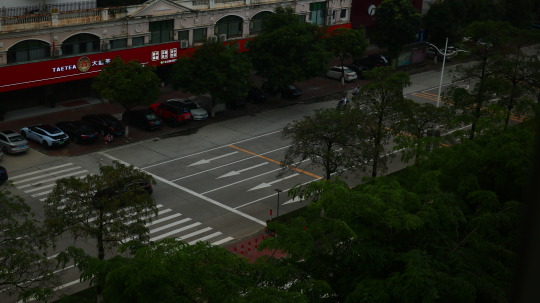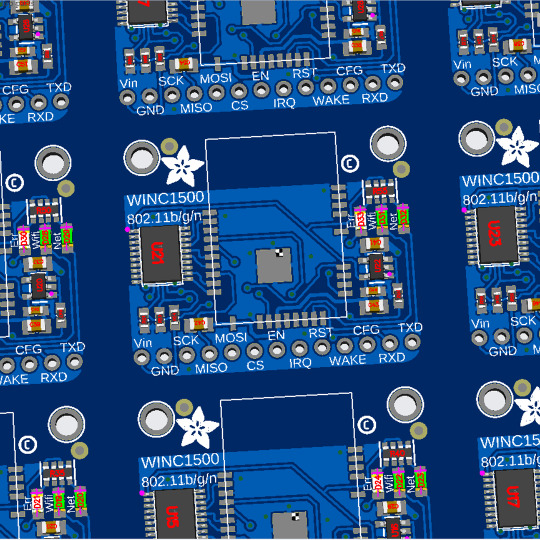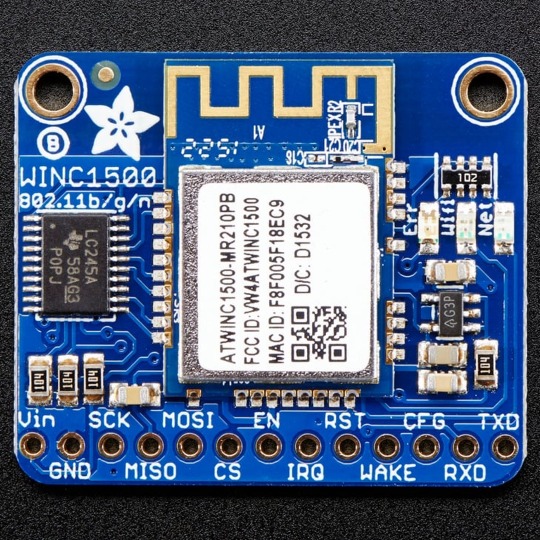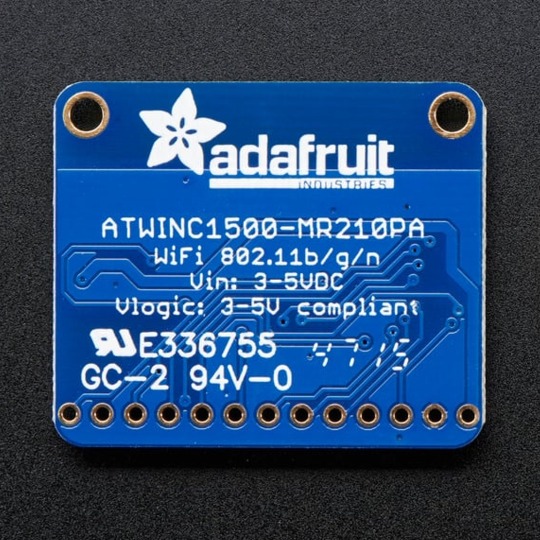#internetofthings
Explore tagged Tumblr posts
Text
#•#IoTDevices#SmartTechnology#InternetOfThings#ConnectedDevices#TechGuide#SmartHome#IoTInnovation#FutureTech#Gadgets#TechTrends
2 notes
·
View notes
Text
Custom IOT Industrial Model Built to Client Specifications | IOT Project & Model Development
We created a custom IOT working model based on the specific requirements of our client. The model's size is 1016mm x 766mm x 283mm, built to perfectly match their needs. This project was done for a client located in Saudi Arabia and Dubai.
🎥 Watch the full video for a closer look at the model and its intricate details!
If you want to bring your project or idea to life, we can help! Contact us today to get started. Don’t forget to like, comment, and share if you enjoyed the video!
Connect With Us: Contact: +919664883746 Email: [email protected] Website : maadhucreatives.com
#iotindustrialdesign#iotengineering#modelmakers#techprojects#smartdevices#internetofthings#custommodels#techsolutions#industrialdesign#digitalmodels#innovationintech#industrial
3 notes
·
View notes
Text
Build an IoT project, the easy way! 🔌💡🌐
WipperSnapper is a firmware designed to turn any WiFi-capable board into an Internet-of-Things device without programming a single line of code.
#adafruit#iot#wippersnapper#internetofthings#firmware#wifi#nocode#lowcode#diy#smartdevices#easypeasy#wireless#techinnovation#plugandplay#projectguide#hasslefree#makeiteasy#iotmagic
16 notes
·
View notes
Text

AR or Augmented Reality and VR or Virtual Reality are the technical inventions that help live our imaginations before our eyes through simulations. AR/VR can be programmed with IoT objects to offer optimal audio-visual experiences that can rival or replicate a physical world without the help of any tangible media.
But, how to program these elements?
The popular programming languages help you build the simulations that bring AR/VR tech to life for the audience. Languages like C#, Python, JavaScript, JAVA, Swift, C++, Rust, and APIs like WebGL allow developers to build the right AR/VR for the users.
Are you willing to build AR/VR tech for your business? Hire Augmented Reality Developers or Virtual Reality Developers via Remote72.
#ar vr technology#augmented reality#virtual reality#app development#developer#programming#software engineering#software#ar vr development services#python#java#javascript#webgl#developers#iot#iot tech#internetofthings#technology#tech
2 notes
·
View notes
Text

The cloud is black
#pictureoftheday#allovertheworld#picoftheday#photooftheday#bestoftheday#the#that#cloud#photooftheweek#is#skyworld#boomerangoftheday#boomerangoftheweek#throughthelens#internetofthings#whatsupstartup#naturalsky#traveltheworld#instagoodmyphoto#myworld#skyvideo#only#ilikeit#asthetic#thebestnewarchitects#thing#a#youcandoit#alllivesmatter#itstimetocelebrate
3 notes
·
View notes
Text

Our smart touch switches redefine luxury with their sleek toughened glass design, seamlessly blending style and innovation.
Wait there is more! You can also control them with ease through the Smarden app for the ultimate comfort at your fingertips.
We are the best home automation company,
contact us for home automation in delhi, mumbai, chandigarh and chennai: +91 85698 06458
or Visit: www.smarden.in
#smart home automation#technology#smart home#home automation#home automation in delhi#home automation system#best home automation company in delhi#touch switches#smart touch switches#wifi touch switches#iot#internetofthings#interiordecor#realestate
2 notes
·
View notes
Text
#smartcities#smartcity#smartcitiesinindia#innovation#technology#rera#indianrealestate#hom#artificialintelligence#city#smart#internetofthings
2 notes
·
View notes
Text
#IoTSecurity#Cybersecurity#DigitalForensics#SmartDevices#powerelectronics#powermanagement#powersemiconductor#InternetofThings
0 notes
Text
Driving innovation with intelligent IoT: Imobisoft’s impact on connected systems
The digital revolution continues to shape the modern world, and at its core lies the Internet of Things (IoT). This transformative technology is enabling smarter decisions, automated operations, and seamless connectivity across industries. One company making a substantial impact in this domain is Imobisoft, delivering intelligent IoT solutions that redefine what’s possible in a connected ecosystem.
Seamless Integration Across the IoT Landscape
Imobisoft builds future-ready IoT ecosystems that span everything from sensor-level integration to cloud-based analytics. Their development framework emphasizes modularity, security, and speed to deployment, allowing clients to remain competitive in fast-moving markets.
Their expertise in crafting IoT solutions for specific use cases has helped clients across logistics, smart infrastructure, and consumer electronics. But one of the standout verticals for Imobisoft has been the automotive sector.
Driving Smart Mobility
As an automotive IoT software development company, Imobisoft is leading the charge in smart mobility. Their solutions enable real-time vehicle diagnostics, fleet tracking, infotainment systems, and advanced telematics – turning traditional vehicles into connected machines.
From electric vehicle ecosystems to autonomous driving support, Imobisoft's development strategies enhance safety, efficiency, and user experience on the road. With an increasing demand for intelligent transport systems, their work supports innovation that meets both consumer and regulatory expectations.
Why Partner with Imobisoft?
With a full-stack approach to IoT development, Imobisoft offers:
Custom-built IoT applications
Embedded systems design
Data analytics and visualization tools
Machine learning integration
Cloud-native scalability
Every project is guided by a user-first mentality, ensuring that the end result is intuitive, scalable, and impactful.
Shaping the Future of IoT
Imobisoft continues to push boundaries with its innovative, data-driven solutions. Their agile development processes and deep industry knowledge make them a reliable partner for organizations looking to embrace the next generation of connectivity.
By bridging the gap between software and hardware, and embedding intelligence into every layer, Imobisoft is shaping the connected future – one smart solution at a time.
#IoT#InternetOfThings#SmartTechnology#ConnectedDevices#AutomotiveIoT#IoTDevelopment#Imobisoft#SoftwareDevelopment#TechInnovation#AIandIoT#AutomotiveSoftware#SmartMobility
0 notes
Text
Smart Camera Market Experiences Surge Driven by Edge Computing and Industrial Automation Applications
The smart camera market is experiencing robust growth, driven by technological advancements and increasing demand for intelligent surveillance solutions. Unlike traditional cameras, smart cameras combine high-resolution image sensors with advanced processing capabilities, allowing them to analyze footage in real-time without the need for external systems. This transformation is reshaping industries ranging from security to manufacturing and retail.

Key Drivers Fueling the Smart Camera Market
A major factor propelling the smart camera market is the integration of artificial intelligence (AI) and Internet of Things (IoT) technologies. AI-powered smart cameras can perform real-time video analytics, such as facial recognition, object tracking, license plate reading, and anomaly detection. These capabilities are especially valuable in applications like traffic management, smart cities, and retail analytics.
IoT connectivity further enhances smart cameras by enabling remote access, cloud storage, and device-to-device communication. This makes it easier for businesses and consumers to monitor environments from any location, increasing the demand for these cameras in both residential and commercial sectors.
Applications Across Diverse Industries
Smart cameras are no longer limited to traditional security applications. In the retail industry, they provide customer behavior analytics, heat mapping, and queue management. Retailers use this data to optimize store layouts, improve customer service, and boost sales.
In manufacturing, smart cameras contribute to quality control and process optimization. By detecting defects in real-time on production lines, companies can reduce waste, ensure product consistency, and lower operational costs.
Smart cameras are also playing a growing role in healthcare settings, where they assist in patient monitoring, contactless temperature scanning, and enforcing hygiene compliance. In transportation, they support traffic monitoring, automated toll collection, and enforcement of traffic laws.
Market Segmentation and Growth Regions
The smart camera market is typically segmented by component (hardware and software), connectivity (Wi-Fi, Ethernet, Bluetooth), resolution (HD, Full HD, 4K), and end-use industries (commercial, residential, industrial, and government).
North America currently holds a significant share of the smart camera market, driven by early adoption of surveillance technologies, the presence of leading tech firms, and rising concerns about public safety. However, Asia-Pacific is expected to witness the fastest growth during the forecast period due to urbanization, infrastructure development, and the proliferation of smart city initiatives in countries like China, India, and South Korea.
Europe also remains a strong player, especially in the automotive and industrial sectors where automation is advancing rapidly. In Latin America, the market is gaining momentum through government investments in public safety and smart infrastructure projects.
Key Players and Competitive Landscape
The competitive landscape of the smart camera market includes technology giants and specialized camera manufacturers. Leading companies include Sony Corporation, Samsung Electronics, Bosch Security Systems, Panasonic Corporation, Canon Inc., and Hikvision Digital Technology. These firms continue to invest in R&D to develop more efficient, intelligent, and energy-saving camera systems.
Startups and smaller tech firms are also contributing to innovation in this space, particularly in AI software and cloud-based camera platforms. Collaborations, mergers, and acquisitions are common strategies to stay competitive and expand product portfolios.
Challenges and Opportunities
Despite the positive growth outlook, the smart camera market faces challenges. Privacy concerns, especially regarding facial recognition and data collection, have led to regulatory scrutiny in various regions. Compliance with privacy laws such as GDPR in Europe or CCPA in California is essential for market players.
Additionally, cybersecurity remains a concern. As more smart cameras connect to networks, the risk of unauthorized access and data breaches increases. Companies must invest in robust encryption, authentication mechanisms, and regular software updates to ensure device security.
However, these challenges also present opportunities. Manufacturers that prioritize ethical data practices and secure product designs are likely to gain consumer trust and differentiate themselves in a crowded marketplace.
Future Outlook
The future of the smart camera market looks promising, with AI and machine learning expected to become even more embedded in device functionality. The evolution toward edge computing—processing data directly on the device rather than in the cloud—will reduce latency, increase reliability, and decrease bandwidth usage. This will be especially crucial for mission-critical applications like autonomous vehicles and industrial automation.
As technology continues to evolve and become more accessible, the smart camera market will likely see continued adoption across both developed and emerging economies. From improving business operations to enhancing public safety, smart cameras are well-positioned to play a central role in the digital transformation of society.
0 notes
Text
Quantum Kernel Methods In Quantum ML For IoT Data Analytics

IoT Data Prediction Improves with Quantum Machine Learning Kernels.
Quantum kernel techniques
Recent research examines how quantum computation could improve the processing and interpretation of the growing volume of data produced by networked IoT devices. Scientists are curious if quantum kernel approaches can improve machine learning tasks like categorising and forecasting data. The use of projected quantum kernels (PQKs) to classify IoT data has been extensively studied by Francesco D'Amore and colleagues.
Beyond kernel approaches, quantum machine learning
Machine learning has great opportunities and challenges as IoT data grows. The study team focused on constructing prediction models with a quantum algorithm-compatible dataset to tackle this. This method avoided the lengthy pre-processing needed to adapt classical datasets to quantum methods.
The study focused on quantum kernel approaches. Kernel approaches tackle problems by implicitly mapping information into a higher-dimensional space. The Projected Kernel (PQK) quantum algorithm encodes data into a Hilbert space, which represents all quantum system states. For analysis, this quantum form is projected onto classical space. This method uses quantum computational principles without data organised for quantum processing.
This study uses a real IoT dataset. Even though many quantum machine learning studies use fabricated or simplified data, realistic issues must be used to assess quantum approaches' applicability. The dataset, a representative sample of smart building data, contained sensor readings of office ambient conditions.
This dataset can also be used with quantum algorithms without complex dimensionality reduction. For better accuracy and processing efficiency, choose a directly compatible dataset. The research shows how these methods might improve smart building occupancy forecast accuracy, addressing a major difficulty in quantum machine learning: the lack of quantum-compatible datasets.
The study stressed proper feature maps. Feature maps are needed to efficiently encapsulate classical data from IoT devices for quantum computation. These maps transform raw data for machine learning. Feature map selection strongly impacts model performance and quantum algorithm data learning. The study examined how many feature maps encoded conventional IoT data into a quantum state to investigate how different encoding strategies affect learning and generalisation.
A PQK approach
Research team benchmarked PQK method extensively. They compared its performance to classical kernel methods and Support Vector Machines. Understanding the quantum technique's pros and cons and assessing its efficacy requires these comparisons. The results suggest that PQK may increase prediction performance, laying the groundwork for comparison with classical methods.
The study found that PQK improves IoT data prediction, although the researchers urged further research. Future research should focus on scaling these algorithms to handle larger and more complex datasets. PQK's noise resistance, a property of near-term quantum technology, must also be examined.
This quantum-inspired strategy will be tested by expanding IoT applications beyond smart buildings and comparing performance to deep neural networks.
The study “Assessing Projected Quantum Kernels for the Classification of IoT Data” describes these findings. Information is more accessible.
This study covers classical machine learning, dataset creation, feature maps, Hilbert space, IoT devices, Quantum kernel approaches, prediction models, projected kernel, quantum algorithms, and quantum machine learning. This work advances quantum machine learning by showing how quantum computing could transform many sectors.
#Quantumkernelmethods#Quantumkernel#Quantummachinelearning#IoT#machinelearning#SupportVectorMachines#InternetofThings#technology#technews#technologynews#news#govindhtech
1 note
·
View note
Text
Career Opportunities in IoT- Explore Paths, Skills & Jobs
In 2025, IoT technology is creating diverse career opportunities in roles like IoT Architect, Embedded Systems Designer, and Network Engineer. Professionals with skills in programming, cloud computing, and cybersecurity are highly sought after in this rapidly growing field Read More..

0 notes
Text
Tren Digital 2025: Teknologi Apa yang Akan Mendominasi

Marketing de Busca - Tren digital tahun 2025 diprediksi bakal jadi momen seru buat dunia digital. Perkembangan teknologi makin pesat dan makin banyak hal baru yang siap mengubah cara kita hidup, belajar, kerja, sampai hiburan. Dari kecerdasan buatan (AI), augmented reality (AR), virtual reality (VR), sampai Internet of Things (IoT), semuanya bakal punya peran penting. Teknologi-teknologi ini nggak cuma canggih, tapi juga mulai masuk ke kehidupan sehari-hari kita. Nah, pertanyaannya sekarang: teknologi apa sih yang bakal paling mendominasi di tahun 2025? Yuk, kita bahas bareng tren digital yang siap bikin hidup makin praktis dan seru. Siap? Yuk, kita mulai petualangan digital kita!
Kecerdasan Buatan (AI) yang Makin Canggih
Kecerdasan buatan alias AI sekarang makin canggih dan makin sering kita temui dalam kehidupan sehari-hari. Dari chatbot sampai rekomendasi konten, semuanya pakai AI. Di tahun 2025, AI diprediksi bakal makin pintar dan jadi teknologi utama yang bantu kerja, belajar, dan aktivitas harian kita. Misalnya: - AI di sekolah: Bayangin anda punya asisten belajar yang ngerti gaya belajarmu dan bantu anda lebih cepat paham pelajaran. - AI buat konten: Banyak konten viral di medsos ternyata udah pakai AI loh! seperti edit foto otomatis, subtitle instan, bahkan bikin lagu atau video. Tren digital satu ini bakal bantu kita lebih produktif dan kreatif, asalkan dipakai dengan bijak ya!
Dunia Virtual: VR dan AR Makin Nyata
Teknologi dunia virtual seperti Virtual Reality (VR) dan Augmented Reality (AR) makin hari makin terasa nyata dan seru. Nggak cuma dipakai buat main game, sekarang VR dan AR juga mulai masuk ke dunia pendidikan, kesehatan, hingga belanja online. Bayangin aja, kamu bisa belajar sejarah sambil “jalan-jalan” ke masa lalu lewat headset VR, atau nyobain baju secara virtual sebelum beli. Di tahun 2025, teknologi ini bakal makin populer dan jadi bagian dari aktivitas harian. Dunia virtual nggak lagi cuma khayalan—sekarang udah mulai jadi kenyataan yang bisa kita nikmati kapan aja. Teknologi VR/AR jadi tren digital yang lagi naik daun banget, terutama buat: - Game dan hiburan: Main game tidak cuma duduk depan layar, tapi anda seakan-akan masuk ke dalam dunia game-nya! - Pendidikan: Bayangin belajar sejarah sambil “jalan-jalan” ke Mesir Kuno pakai headset VR. - Belanja online: Mau beli baju? Coba dulu pakai AR, lihat cocok atau tidak, baru klik beli. Tren digital ini bikin pengalaman jadi lebih interaktif dan seru!
Social Media yang Lebih Personal
Di tahun 2025, media sosial makin terasa personal dan dekat. Platform-platform baru mulai fokus ke pengalaman pengguna yang lebih privat, seperti grup kecil, fitur close friends, atau pesan pribadi. Jadi, interaksi nggak lagi cuma soal viral-viral-an, tapi juga soal koneksi yang lebih berarti antar pengguna. Contoh tren digital yang muncul: - Algoritma makin pintar: Konten yang muncul di timeline anda benar-benar sesuai minat. - Konten pendek makin dominan: Video singkat 15-30 detik bakal makin laris. - Privasi lebih dijaga: Banyak platform mulai kasih kontrol lebih ke pengguna soal data pribadi. Tapi tetap ingat ya, jangan sampai ketergantungan! Gunakan sosial media buat hal positif dan membangun.
Internet of Things (IoT) di Rumah Kita
Internet of Things (IoT) bikin hidup di rumah jadi makin praktis dan canggih. Bayangin aja, lampu bisa nyala sendiri, kulkas ngingetin belanja, atau AC nyala otomatis pas kita mau pulang. Semua alat rumah terhubung internet, bikin segalanya lebih mudah dan efisien. Contohnya: - Lampu otomatis yang bisa nyala-mati lewat HP. - Jam pintar (smartwatch) yang bisa ingetin anda buat minum air atau olahraga. - Kulkas pintar yang ngasih tahu kalau stok makanan habis. Teknologi ini bikin hidup jadi lebih gampang dan efisien, apalagi buat yang suka hal praktis!
Aplikasi Ramah Lingkungan
Aplikasi ramah lingkungan kini makin banyak dan membantu kita untuk lebih peduli pada bumi. Mulai dari aplikasi untuk mengurangi sampah, menghemat energi, hingga yang membantu menanam pohon, semua ada di genggaman tangan kita. Dengan menggunakan aplikasi ini, kita bisa ikut berkontribusi menjaga lingkungan lebih baik. Beberapa tren digital ramah lingkungan: - Aplikasi daur ulang: Bisa scan sampah, lalu kasih tahu cara membuangnya dengan benar. - Aplikasi transportasi hijau: Ngasih info rute jalan kaki, sepeda, atau kendaraan listrik terdekat. - Smart energy: Alat penghemat listrik yang bisa dikontrol lewat aplikasi. Keren banget kan? Kita bisa jadi lebih ramah lingkungan sambil tetap digital.
Keamanan Digital yang Makin Ketat
Keamanan digital kini jadi perhatian utama, seiring semakin canggihnya teknologi. Semakin banyaknya data pribadi yang kita simpan online membuat kita perlu lebih waspada. Keamanan digital yang ketat, seperti enkripsi dan autentikasi dua faktor, membantu melindungi informasi kita agar tetap aman dari ancaman siber yang semakin berkembang. Beberapa hal yang bakal jadi perhatian: - Autentikasi biometrik: Login pakai sidik jari, wajah, bahkan suara. - Aplikasi keamanan data: seperti VPN, enkripsi data, dan pengatur izin akses aplikasi. - Pendidikan digital: Banyak sekolah dan platform mulai ngajarin pentingnya menjaga privasi online. Jadi, jangan asal klik link atau buka file ya. Jaga data pribadi anda baik-baik!
Dunia Kerja Jadi Fleksibel
Nah, buat anda yang mulai mikirin masa depan dan kerjaan, tren digital juga bikin cara kerja berubah. Banyak perusahaan yang sekarang lebih suka kerja jarak jauh (remote) atau hybrid (gabungan antara di kantor dan di rumah). Apa hubungannya dengan tren digital? - Aplikasi kerja kolaboratif: Seperti Google Workspace, Zoom, Slack. - Platform freelance: Banyak anak muda yang kerja lepas (freelance) cukup dari rumah! - Skill digital makin penting: Tidak cuma jago akademik, tapi juga ngerti teknologi, bisa jadi nilai plus. Jadi, jangan takut belajar hal baru ya. Dunia kerja makin terbuka buat siapa aja!
Kreativitas Digital Tanpa Batas
Kreativitas digital kini berkembang pesat, membuka peluang tanpa batas bagi siapa saja untuk berkreasi. Dengan berbagai alat dan platform digital, orang bisa menghasilkan karya seni, video, musik, hingga tulisan yang mudah diakses dan dibagikan ke seluruh dunia. Era digital memberikan kebebasan ekspresi yang lebih luas dan tak terbatas. Contoh platform yang mendukung: - Canva, CapCut, VN, dan lainnya: Bikin konten kece dalam hitungan menit. - AI kreatif: Anda bisa bikin ilustrasi, musik, bahkan komik pakai bantuan AI. - NFT dan Web3: Buat anda yang suka koleksi digital, ini bakal makin booming! Teknologi ini bantu anda jadi lebih kreatif dan bahkan bisa jadi penghasilan kalau ditekuni. Kesimpulan: Siap Hadapi Tren Digital 2025 Tahun 2025 tinggal selangkah lagi, dan tren digital makin hari makin cepat berkembang. Dari teknologi kecerdasan buatan, media sosial yang terus berevolusi, sampai gaya hidup serba digital, semuanya bikin kita harus siap beradaptasi. Anak muda, terutama generasi milenial dan Gen Z, jadi ujung tombak perubahan ini. Tapi, pertanyaannya sekarang: udah siap belum kita menghadapi tren digital 2025? Tidak cuma soal update teknologi, tapi juga soal cara berpikir yang lebih terbuka, bijak, dan cerdas dalam menggunakan teknologi buat kebaikan diri sendiri dan lingkungan sekitar. Yuk, kita bahas bareng. Read the full article
0 notes
Text




PCB of the Day! ATWINC1500 WiFi Breakout 🔌🌐🛠
Connect your development boards to the Internet with this fine WiFi module. This 802.11bgn-capable WiFi module is the best new thing for networking your devices, with SSL support and rock solid performance.
#adafruit#electronics#opensource#opensourcehardware#pcboftheday#pcb#wifi#arduino#internetofthings#iot#networking#tech#innovation#diy#maker#wireless
2 notes
·
View notes
Text
Discover how the Internet of Things connects industries through smart sensors, wearables, and industrial automation solutions. Explore real-world applications in healthcare, agriculture, and smart cities. Stay updated on security challenges, 5G-enabled IoT advancements, and edge computing developments. Perfect for engineers, product managers, and tech-savvy consumers.
0 notes
Text
Where maps meet technological advancements—explore how GIS and IoT weave a living tapestry of smart cities, sensing change, guiding growth, and echoing the rhythm of a smarter tomorrow.
#digitaltwins#environmentalmonitoring#geospatialinnovation#geospatialtechnology#gis#gisiotintegration#internetofthings#locationintelligence#realtimegis#smartmaps#spatialanalytics
0 notes